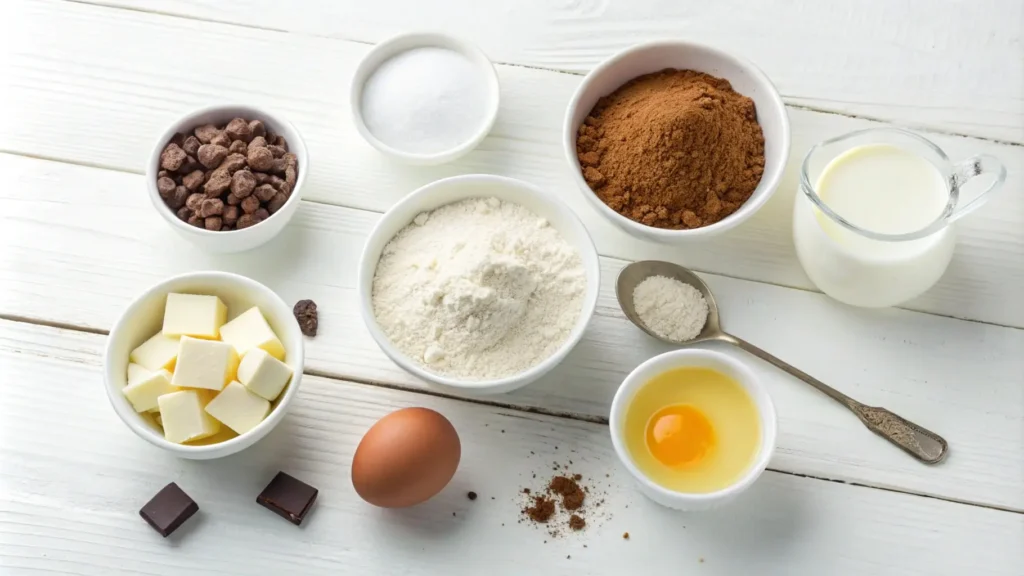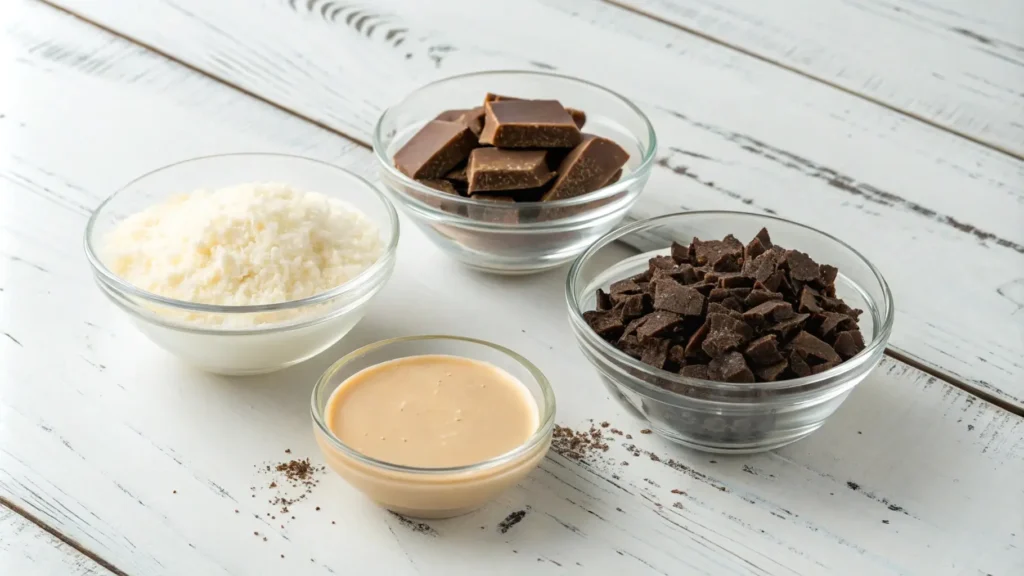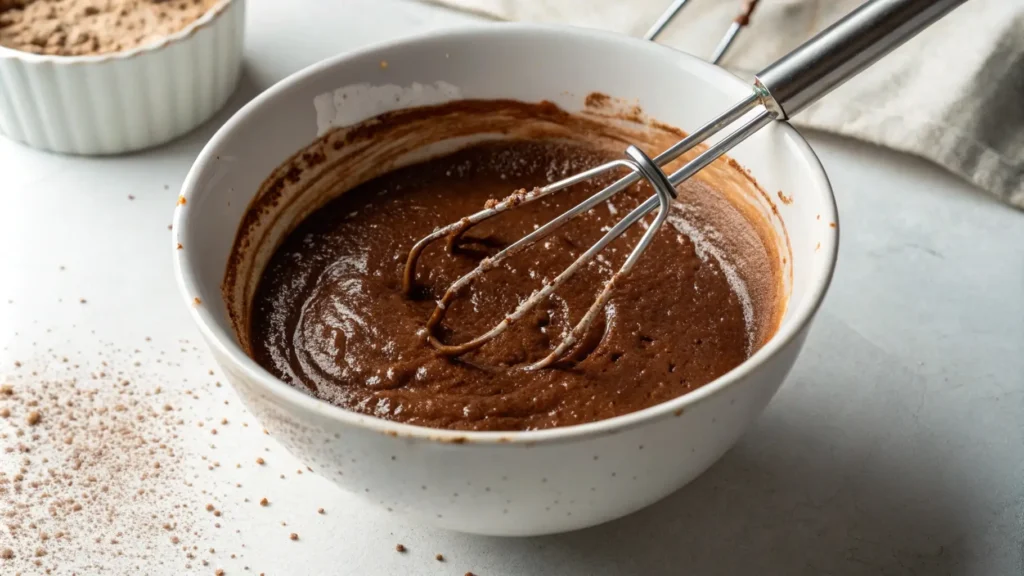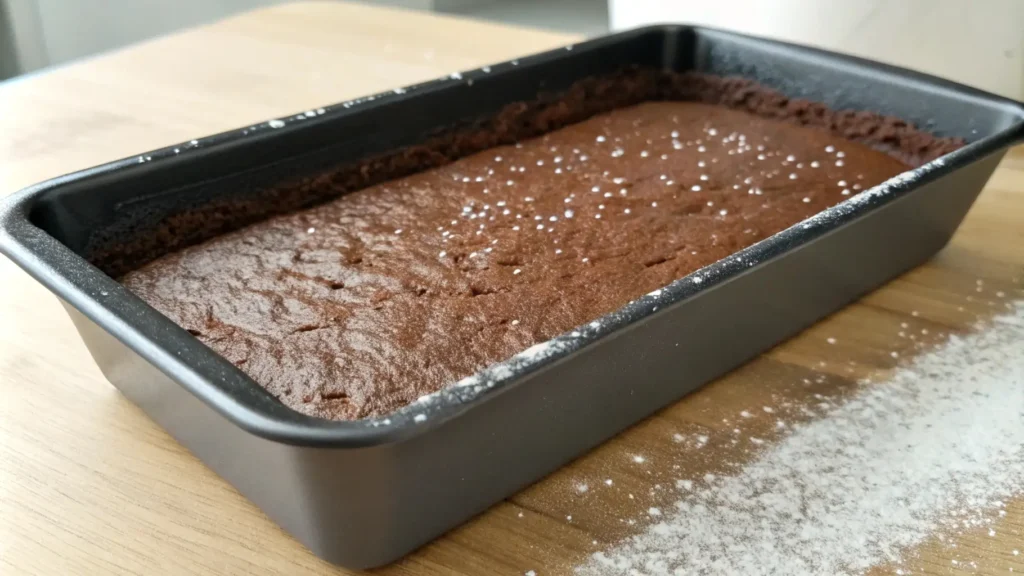Why Kefir Makes a Great Cake Ingredient
If you’re someone who loves experimenting with new ingredients in the kitchen, you’re in for a treat with this one. Have you ever thought about using kefir in your baking? Sounds interesting, right? Well, trust me, kefir makes for an amazing cake ingredient, and we’re about to get into why. Not only does it give your cake a deliciously unique flavor, but it also adds moisture, tenderness, and even a little health boost. Keep reading to find out why kefir is the secret ingredient your cakes might be missing!
What is Kefir?
Definition and Benefits of Kefir
Alright, so let’s start with the basics. What the heck is kefir, anyway? Well, think of it as a tangy, probiotic-rich drink similar to yogurt, but a little more liquid. It’s made by fermenting milk (or sometimes water) with kefir grains, which are a mixture of bacteria and yeast. These little grains work their magic, turning the milk into a slightly fizzy, creamy beverage that’s packed with beneficial probiotics.
So why should you care? Well, kefir is not just any random ingredient—it’s got some serious health benefits. Not only does it help with digestion, but it can also boost your immune system, improve bone health, and even contribute to a healthier gut. If you’re looking for a way to make your cakes not only taste great but also offer a little health boost, kefir’s your go-to!
Nutritional Value of Kefir
How Kefir Boosts Health
Now let’s talk about why kefir is more than just a tasty ingredient. This drink is loaded with nutrients that can do wonders for your health. First off, it’s a great source of protein, calcium, and B vitamins. So, adding kefir to your sheet cake means you’re sneaking in some extra nutrients, all while keeping things moist and flavorful.
But here’s the kicker: kefir’s probiotic content is what really sets it apart. These probiotics, which are live bacteria and yeast, work their magic by supporting gut health. And we all know a healthy gut is a happy body, right? Not only does kefir promote better digestion, but it can also help balance the good and bad bacteria in your gut, keeping everything running smoothly.
So, whether you’re making a kefir sheet cake for a special occasion or just because you love baking (and health), you’re getting a sweet combo of taste and wellness benefits. What’s not to love?
How Kefir Transforms Sheet Cake
The Science Behind Kefir’s Role in Baking
If you’ve ever baked a cake before, you know that the ingredients you choose can really make or break it. But here’s the fun part—kefir isn’t just a random swap for milk or buttermilk. It actually works in some pretty unique ways that can seriously transform your sheet cake. So, what’s the science behind it? Let’s get into it!
Kefir’s magic in baking comes from its natural acidity and the live probiotics it contains. This acidity reacts with baking soda or baking powder, giving your cake that perfect lift and fluff. Essentially, kefir helps activate the leavening agents in your batter, making your cake rise and creating that tender crumb we all love. But it doesn’t stop there. The probiotics also break down some of the proteins in the flour, which can help the texture stay soft and moist longer than traditional cakes.
And don’t forget the flavor! The tanginess of kefir adds a subtle, slightly sour taste to the cake, which can balance out the sweetness and give it a depth you wouldn’t get with just plain milk. So, while you might think kefir is just a dairy drink, it’s actually working overtime to improve both the texture and flavor of your cake. Pretty cool, right?
Kefir vs. Traditional Cake Ingredients
Comparison of Texture and Flavor
Okay, now let’s talk about how kefir stacks up against those traditional cake ingredients you might be used to, like milk, buttermilk, or yogurt. If you’ve ever made a cake with buttermilk, you know how it gives that soft, tender texture and slight tang. Well, kefir does all that and more!
Texture:
First off, kefir brings a level of moisture to your cake that’s hard to beat. While milk can sometimes leave cakes a little dry, kefir adds a richer, more velvety texture. The probiotics in kefir break down the gluten in the flour, which results in a softer, fluffier crumb. So, if you want a cake that’s light and airy, kefir’s the way to go.
Flavor:
As for flavor, kefir’s tanginess is a game-changer. While buttermilk can add a mild sourness, kefir brings a stronger, more complex flavor profile that cuts through the sweetness of your cake without overwhelming it. This balance makes the cake taste more sophisticated—without being too “out there” for your guests. It’s a perfect blend of creamy, tart, and slightly yeasty, which gives your cake a little more character than the standard vanilla or chocolate cake.
In short, kefir takes your sheet cake to the next level in both texture and flavor. It’s not just a substitute; it’s a real upgrade. So, next time you’re baking, give kefir a try—it’ll totally change how you think about cake.
Preparing the Perfect Kefir Sheet Cake
Essential Ingredients for a Successful Sheet Cake


Ready to bake the perfect kefir sheet cake? Before you get started, it’s key to know what ingredients you’ll need to make sure your cake turns out just right. The good news is you don’t need anything too fancy—just a few simple ingredients that come together to create magic in the oven.
Here’s what you’ll need for a successful kefir sheet cake:
- Flour: All-purpose flour works great for this recipe, giving your cake structure while keeping it soft and tender.
- Kefir: The star of the show! You’ll need full-fat kefir to make sure your cake stays moist and flavorful.
- Sugar: To balance the tangy kefir, you’ll need a bit of sweetness—granulated sugar does the trick.
- Baking Soda: This helps activate the kefir’s acidity and make the cake rise.
- Eggs: Eggs provide structure and help the batter hold together.
- Butter or Oil: For a rich, tender crumb. Choose your favorite!
- Vanilla Extract: A little splash for that classic, comforting flavor.
Got everything? Great! Now, let’s dive into the step-by-step guide on how to turn these simple ingredients into the perfect kefir sheet cake.
How to Make Kefir Sheet Cake
Step-by-Step Guide to Preparing the Cake


Making kefir sheet cake is honestly a breeze. The beauty of this cake is how simple it is to prepare. Here’s a quick rundown of how to get from ingredients to a delicious, fluffy cake:
- Preheat Your Oven: Set the oven to 350°F (175°C) and grease a sheet pan. Line it with parchment paper if you want an easy cleanup.
- Mix Dry Ingredients: In a bowl, whisk together your flour, baking soda, and a pinch of salt. This helps distribute the baking soda evenly through the flour, ensuring your cake rises perfectly.
- Combine Wet Ingredients: In another bowl, whisk together the kefir, sugar, eggs, and vanilla extract until smooth.
- Cream the Butter (if using): If you’re using butter, cream it with the sugar until light and fluffy. This helps the cake’s texture.
- Combine the Wet and Dry: Gradually mix the wet ingredients into the dry, stirring until just combined. Don’t overmix—this can make your cake dense.
And that’s it! You’re ready to bake.
Mixing the Ingredients
Tips for Combining Kefir and Other Cake Ingredients
When it comes to mixing your kefir sheet cake ingredients, you’ll want to follow a few tips to make sure everything comes together perfectly:
- Don’t Overmix the Batter: Once you combine the wet and dry ingredients, be gentle. Overmixing can lead to a tough cake, and nobody wants that! Stir just until everything is combined, and you’ll have a light, fluffy texture.
- Room Temperature Ingredients: Let your eggs, butter, and kefir come to room temperature before you start. This helps everything mix together more smoothly and ensures a better rise.
- Sift the Dry Ingredients: Sifting the flour and baking soda together can help remove any lumps and ensures an even distribution throughout the batter.
Mixing the ingredients properly is one of the keys to getting a moist and tender cake, so take your time and enjoy the process!
Baking the Cake
Best Temperature and Timing for a Perfect Cake
Now, let’s talk about baking. It’s one of the most important steps to get the perfect kefir sheet cake. Here’s how to do it right:
- Set the Right Temperature: As mentioned earlier, preheat your oven to 350°F (175°C). This is the sweet spot for baking a moist and fluffy sheet cake.
- Timing: The baking time is usually about 25–30 minutes, but this can vary depending on your oven and pan size. Keep an eye on it! You’ll know your cake is done when it’s golden brown on top and a toothpick inserted in the center comes out clean or with just a few crumbs attached.
- Let it Cool: Once the cake is done, let it cool in the pan for about 10 minutes. Then, transfer it to a wire rack to cool completely before frosting or serving.
Tip: If you’re in a hurry, you can speed up the cooling process by placing the cake in the fridge for a few minutes—just make sure it’s not hot when you put it in!
By following these simple steps, you’ll have a light, fluffy, and perfectly baked kefir sheet cake ready to enjoy. Whether it’s for a family gathering or just a treat for yourself, you’ll love how easy—and delicious—this cake is to make!
Decorating Your Kefir Sheet Cake
Creative and Simple Decoration Ideas
Okay, you’ve baked the perfect kefir sheet cake—now, it’s time to take it to the next level with some fun and easy decorations! Decorating a cake doesn’t have to be fancy or time-consuming. With just a few simple touches, you can turn your cake into a showstopper. Here are some creative ideas that’ll make your kefir sheet cake look as good as it tastes.
First off, you can keep things simple with a light dusting of powdered sugar or a drizzle of syrup. A little bit goes a long way in making your cake look polished without overcomplicating things. If you want to go a bit more elaborate, you can pipe some frosting in fun designs like rosettes, or even write a sweet message on top.
Want to add some texture? Crushed nuts or a handful of coconut flakes sprinkled over the top can give your cake a nice crunch. Fresh berries or a few sprigs of mint can also add a pop of color and freshness. Honestly, decorating a kefir sheet cake is about having fun with it. There are so many ways to make it your own!
Frosting Options
Best Frosting Combinations for Kefir Cake
When it comes to frosting, you’ve got plenty of options to choose from. Since kefir brings a tangy, slightly sour flavor to the cake, you’ll want a frosting that complements it. Here are some of the best frosting ideas that pair perfectly with kefir sheet cake:
- Cream Cheese Frosting: This is an all-time favorite! The tanginess of the cream cheese pairs beautifully with the slight sourness of the kefir, creating a delicious balance of flavors. You can sweeten it up with a little powdered sugar or vanilla extract to make it even more irresistible.
- Whipped Cream Frosting: If you’re looking for something lighter, whipped cream frosting is a great choice. It’s smooth, fluffy, and won’t overpower the flavor of the cake. You can even add a splash of vanilla or almond extract for an extra flavor boost.
- Buttercream Frosting: If you want a rich, sweet frosting to contrast the tangy cake, classic buttercream is always a winner. It’s thick and creamy and can be easily flavored with vanilla, chocolate, or citrus zest to match your style.
Mix and match your frosting with the toppings we’ll get into next for a fully loaded kefir sheet cake that’ll impress everyone!
Adding Toppings
Fruit, Nuts, and More for Topping Your Kefir Cake
Now that your cake is frosted, let’s talk about toppings! These little additions can take your kefir sheet cake from good to great with just a few simple steps. Here are some topping ideas to make your cake extra special:
- Fresh Fruit: Fresh berries, like raspberries, strawberries, or blueberries, are an obvious choice. Their tartness pairs beautifully with the tangy kefir, making every bite a burst of flavor. You can also try slices of citrus fruits like oranges or lemons for a fresh, zesty kick.
- Nuts: Chopped walnuts, pecans, or almonds can add a crunchy texture that contrasts with the soft cake. Toast them lightly for an extra depth of flavor.
- Coconut Flakes: If you love a tropical touch, sprinkle some shredded coconut over the top. It adds texture and a bit of sweetness without overpowering the cake.
- Chocolate Shavings or Chips: For a little indulgence, try topping your cake with chocolate shavings or mini chocolate chips. The rich chocolate pairs beautifully with the cake’s tangy flavor.
Mixing up your toppings is a great way to make the cake feel more festive and fun. Get creative and add whatever you love!
Tips for the Best Kefir Sheet Cake
Common Mistakes to Avoid in Kefir Cake Baking
Baking kefir sheet cake is pretty straightforward, but like with any recipe, there are a few things that can go wrong. Don’t worry, though—we’ve got you covered. Here are some common mistakes to avoid when baking your kefir sheet cake:
- Using the Wrong Type of Kefir: Full-fat kefir works best for baking since it provides the right moisture and richness. Low-fat kefir can make the cake a bit too dry, so stick with the creamy stuff!
- Overmixing the Batter: Mixing the batter too much can make your cake dense and heavy. Stir the ingredients just enough to combine them, and leave it at that. A light touch is key for a soft cake.
- Not Letting the Cake Cool: If you frost or slice your cake before it cools completely, it can end up a little too mushy or even fall apart. Be patient—let the cake cool down properly for the best results!
If you keep these tips in mind, you’ll have a cake that’s light, fluffy, and full of flavor every time.
Troubleshooting Cake Texture
Fixing Overly Dense or Dry Cake
Okay, so maybe your cake didn’t turn out as perfect as you hoped. Don’t stress—it happens to the best of us! If your kefir sheet cake turns out too dense or dry, here’s what you can do to fix it:
- Dense Cake: This could happen if you overmixed the batter or used too much flour. Next time, try measuring your flour by spooning it into the measuring cup and leveling it off (instead of scooping straight from the bag). Also, try mixing the ingredients just until combined—don’t go overboard!
- Dry Cake: If the cake feels dry, you might have overbaked it. Try reducing the baking time by a few minutes and keep an eye on the cake. You can also add a little extra kefir or a tablespoon of milk next time to keep things moist.
No cake is perfect, but with a little practice, you’ll be a kefir sheet cake pro in no time!
Enhancing Flavor
How to Customize Your Kefir Cake Flavor Profile
One of the best things about baking your own kefir sheet cake is that you can make it exactly how you like it. Want to change up the flavor profile? Here’s how to add some twists to make your cake even more unique:
- Add Zest: Adding citrus zest—like lemon, lime, or orange zest—will brighten up the flavor and add a fresh kick to your cake. Just a teaspoon or two will do the trick.
- Spices: Want a little warmth in your cake? Cinnamon, nutmeg, or even a dash of ginger can make your kefir sheet cake feel cozy and comforting.
- Vanilla or Almond Extract: A little splash of either of these extracts can add extra depth to the flavor. Vanilla is classic, but almond extract can give it a nice twist if you’re feeling adventurous.
Feel free to get creative and make the cake match your personal taste—after all, it’s your cake!
Frequently Asked Questions
Common Questions about Kefir Sheet Cake
If you’re new to kefir sheet cake, you probably have a few questions. Here are the answers to some common ones!
Simple Kefir Sheet Cake Recipe Card
A quick, easy recipe for a classic kefir sheet cake. For more information, visit this Simple Kefir Sheet Cake Recipe Card
Easy Kefir Sheet Cake Recipe Card
A simple version of the kefir sheet cake, perfect for beginners. For more information, visit this Easy Kefir Sheet Cake Recipe Card
Chocolate Chai Kefir Cake
A delicious twist on the kefir cake with rich chocolate and warming chai flavors. For more information, visit this Chocolate Chai Kefir Cake
Czech Dessert Recipes
Traditional Czech desserts with a unique and flavorful touch. For more information, visit this Czech Dessert Recipes
How Long Does Kefir Sheet Cake Last?
Storage and Shelf Life of Kefir Cake
Room Temperature: Store your cake covered for 2–3 days.
Refrigeration: Keep it in the fridge for up to 5 days.
Freezing: Wrap it tightly and freeze for longer storage. Thaw at room temperature when ready to enjoy.
Can I Use Non-Dairy Kefir?
Making Vegan or Dairy-Free Kefir Sheet Cake
Yes! You can use non-dairy kefir made from coconut, almond, or soy milk. These work just as well as dairy kefir. For a completely vegan cake, swap eggs with flax eggs and use plant-based butter or coconut oil.
Conclusion
Why You Should Try This Kefir Sheet Cake Recipe
Kefir sheet cake is easy to make, light, and delicious. The tangy flavor of kefir adds a unique twist, and you can customize it with your favorite frosting and toppings. It’s a fun, tasty cake that’s sure to impress, whether for a special occasion or just because you deserve it! For more recipes, visit this Zenrecipes.net.

